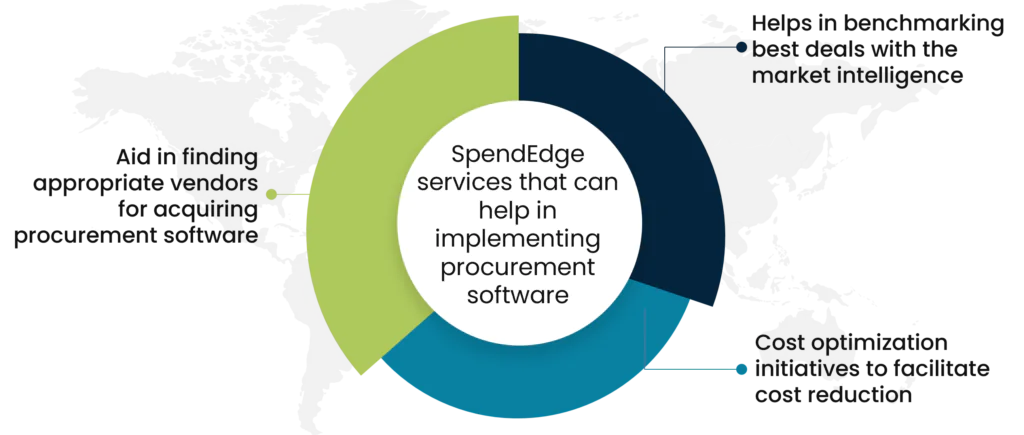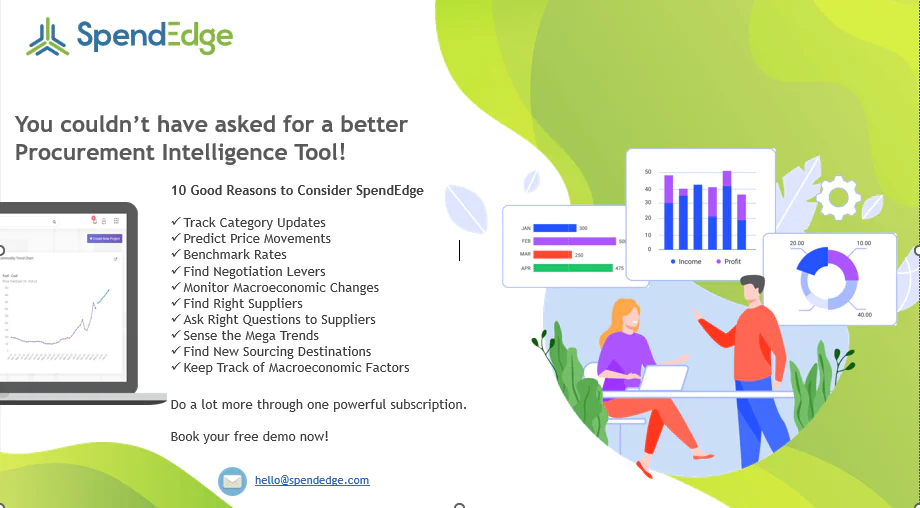Procurement software is a type of software that helps businesses, organizations, and other entities to automate and streamline their procurement process. It assists in managing and tracking the purchase of goods and services, from the initial request for a quote to the final payment to the supplier. Additionally, procurement software provides a centralized system for tracking and managing contracts, purchase orders, invoices, and other procurement-related documents. By automating the procurement process, businesses can improve efficiency, reduce costs, and minimize errors.
Procurement software offers several benefits to businesses. It streamlines purchasing processes, improving efficiency and reducing manual errors. It enhances visibility into supplier relationships, helping in vendor management and negotiation. Cost savings are realized through better sourcing decisions and spend analysis. Automation increases compliance with procurement policies, reducing risks. Real-time data and analytics enable informed decision-making. Overall, procurement software optimizes operations, reduces costs, and boosts productivity, ultimately contributing to a more competitive and profitable business.
Here are the key steps to implementing procurement software
1. Define your objectives:
Clearly articulate your goals, whether they are focused on cost reduction, process efficiency, compliance, or supplier relationship management. Ensure that your objectives are specific, measurable, achievable, relevant, and time-bound (SMART).
2. Assess current processes:
Conduct a comprehensive review of your current procurement workflows and document all the steps involved. – Identify pain points, bottlenecks, and areas where automation can be most beneficial. Involve key stakeholders in this assessment to gather insights and suggestions.
3. Select the right software:
Research different procurement software solutions and create a shortlist based on your requirements. Consider factors such as the software’s scalability, ease of integration with your existing systems, vendor reputation, and long-term cost of ownership.
4. Create a project team:
Form a cross-functional team that includes experts from procurement, finance, IT, and the end-users. Assign clear roles and responsibilities to team members to ensure efficient coordination.
5. Develop a project plan:
Create a detailed project plan with clear milestones, timelines, and budget estimates. Identify potential risks and develop strategies to mitigate them. Establish key performance indicators (KPIs) to measure the success of the implementation.
6. Customize the software:
Work closely with the software vendor to configure the software to your organization’s specific needs and workflows. Ensure that the software accommodates your preferred approval processes, procurement policies, and any unique requirements.
7. Data migration:
Migrate existing procurement data from legacy systems or spreadsheets into the new software. Validate the accuracy and completeness of the data to prevent errors in the new system.
8. User training:
Develop a comprehensive training program for end-users to familiarize them with the software’s features and functionalities. Offer ongoing training and support to address user questions and challenges as they arise.
9. Testing and quality assurance:
Conduct rigorous testing of the software to identify and rectify any issues, including functional, security, and integration testing. Engage key users in the testing process to ensure that the software aligns with their needs.
10. Rollout and support:
Rollout and support is a crucial step in implementing procurement software. During this phase, the procurement software is deployed and made available to the users within the organization. This involves installing the software, configuring it to meet the organization’s specific requirements, and ensuring its compatibility with existing systems and processes.
11. Evaluate and optimize:
It is important to regularly evaluate the performance of your software against the KPIs and objectives you have defined. This will help you identify areas that require adjustments, updates, or enhancements to optimize the system’s functionality and ensure it continues to meet the evolving needs of your organization. By following these detailed steps, you can plan and execute a successful procurement software implementation.
SpendEdge services that can help in implementing procurement software

Aid in finding appropriate vendors for acquiring procurement software:
We can assist you in narrowing down the potential supplier base for acquiring appropriate procurement software providers by clearly defining your business outcomes. You can sift through the pool of suppliers to effectively understand the available options and streamline your search to include only those suppliers that can meet all or most of your requirements. We will help you identify the criteria that are crucial to achieving your supplier engagement objectives, gauge the supplier capabilities based on these criteria, and gain detailed information about supplier performance specific to each KPI. We will also sort suppliers into quadrants, and rank them to identify the best-fit suppliers.
Cost optimization initiatives to facilitate cost reduction:
To increase profit margins and utilize resources more wisely, we assist you in locating and eliminating wasteful expenses. This way, you may use our cost-optimization projects to reduce the cost of acquiring procurement software. By obtaining our information about the associated expenses, you may guarantee efficient and successful operations, enhance resource allocation and efficiency, streamline procedures, and cut down on waste. You can pinpoint areas of excessive spending and little use, this will help you reallocate resources to enhance output, decrease waste, and improve productivity. Identifying shortcomings and inefficiencies along with chances for cost savings is made easier with our cost optimization efforts.
Helps in benchmarking best deals with the market intelligence:
At SpendEdge, we assist companies in identifying the most cost-effective options and ensuring that their potential partnerships and business deals meet the same standards as them. Our deal benchmarking services enable you to analyze the strategies and technologies of your competitors and industry leaders. This analysis helps procurement officers and supply chain managers in making research-driven business decisions and strategies. Deal benchmarking empowers companies to identify, analyze, and prepare comprehensive strategies. They can also determine significant needs and requirements, the industry standard for deals and contracts, and the ideal suppliers and vendors to partner with.
The success story: SpendEdge helped a bank with its procurement operations
Our client is a Europe headquartered bank with a global presence in comparing deals offered by various service providers. The bank aimed to identify the provider offering the lowest cost of ownership and maximum value throughout a medium-term contract.
Our team of SpendEdge experts conducted a thorough procurement analysis and assisted the client in breaking down the contract into individual line items. This allowed the bank to perform a comprehensive cost analysis, compare costs between different service providers, identify any hidden costs, and evaluate the overall value proposition of each provider. By leveraging our analytical tools and methodologies, the bank gained deep insights into the offerings of each provider. Armed with this information, the client was able to make an informed decision on the most suitable service provider that aligned with their specific requirements.
With our assistance, the bank achieved cost savings, enhanced value, and ultimately secured a successful partnership with the chosen service provider.





